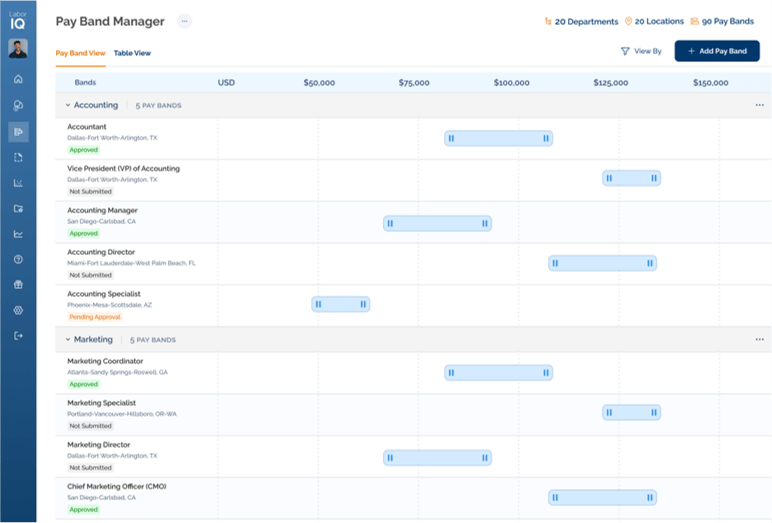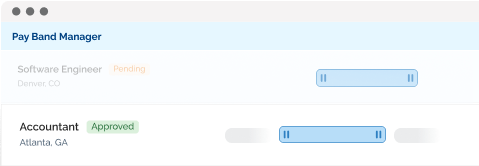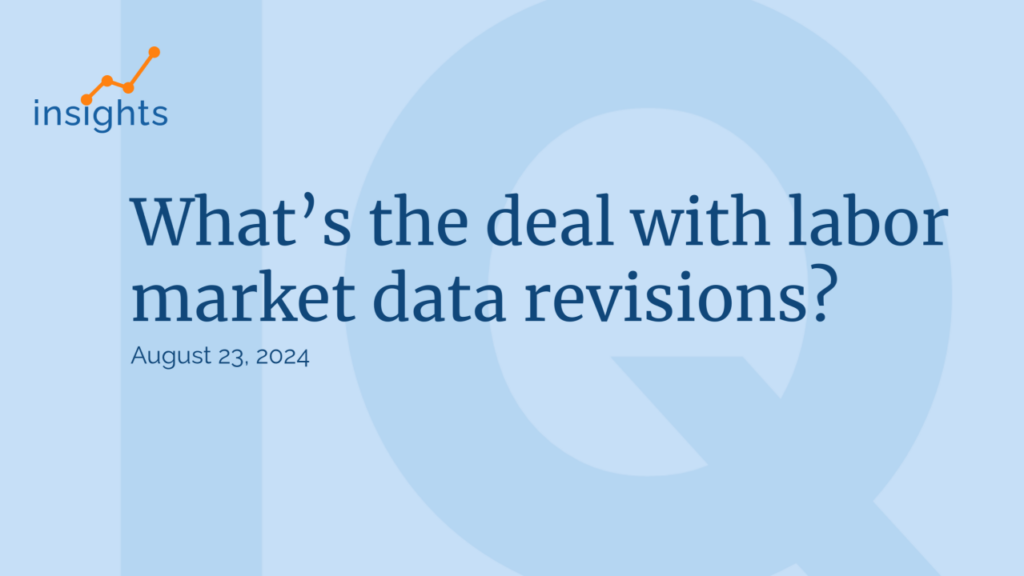Self-reported and crowd-sourced compensation data has proliferated through free online platforms, or paid software from brand name sites, creating the illusion of accessible market intelligence for HR professionals. However, relying on these unverified sources introduces notable risks including data inaccuracy, sample bias, outdated information, and strategic compensation errors that undermine competitive positioning. This article examines the critical limitations of crowd-sourced compensation data and demonstrates why professional-grade market intelligence remains essential for developing fair, competitive pay strategies that support organizational success.
Limitations of Self-Reported Compensation Data
Accuracy and Verification Challenges
Self-reported compensation data often lacks verification, making it unreliable for salary benchmarking and pay strategy decisions. Individual contributors often misunderstand their total compensation components, confuse base salary with total cash compensation, or intentionally inflate reported figures to influence market perceptions.
Critical Accuracy Issues:
- Unverified salary claims with no validation or audit processes
- Confusion between base salary, total cash compensation, and total rewards
- Intentional misrepresentation inflating perceived market rates by 15-25%
- Mixing of compensation across different geographic markets without proper adjustments
- Failure to account for benefits, equity, bonuses, and other compensation components
Research indicates that self-reported salary data diverges from verified compensation by an average of 18-22%, with higher-level positions showing even greater discrepancies due to complex compensation structures.
Sample Bias and Representation Problems
Crowd-sourced platforms attract non-representative samples that skew market perceptions and create misleading benchmarks for compensation planning.
Sample Bias Factors:
- Over-representation of job seekers and dissatisfied employees inflating reported expectations
- Under-representation of satisfied employees with competitive compensation
- Geographic concentration in tech hubs creating distorted national perspectives
- Industry clustering failing to represent broader market conditions
- Self-selection bias attracting extreme rather than typical compensation situations
Organizations using biased or incomplete samples may set pay bands 10–30% off true market rates, leading to poor benchmarking and costly compensation strategy errors.
Currency and Timeliness Concerns
Free compensation platforms rarely update data systematically, leaving organizations relying on outdated information in rapidly evolving markets.
Timeliness Limitations:
- Data often reflects compensation from 6-24 months prior to submission
- No systematic refresh cycles ensuring current market representation
- Inability to capture recent market shifts, economic changes, or industry disruptions
- Lag between market movements and crowd-sourced data updates
- Mixing of historical and current data creating unclear temporal positioning
During periods of rapid wage growth or market volatility, outdated data can result in compensation strategies that are 15-20% below current market requirements, severely impacting talent acquisition and retention capabilities.
Strategic Risks of Free Internet Compensation Sources
Limited Job Matching Precision
Free platforms typically rely on job titles rather than detailed role analysis, creating false equivalencies between fundamentally different positions.
Job Matching Challenges:
- Title-based matching ignoring responsibility scope, complexity, and organizational impact
- Failure to account for industry-specific role variations and requirements
- Inadequate consideration of experience levels, skill requirements, and performance expectations
- Missing context about company size, growth stage, and competitive positioning
- Inability to capture emerging roles or specialized positions with limited data
Organizations using imprecise job matching risk compensation errors of 20-40% for specialized or complex positions, undermining both internal equity and external competitiveness.
Incomplete Compensation Picture
Free sources typically focus on base salary while ignoring critical compensation components that comprise total rewards packages.
Missing Compensation Elements:
- Performance bonuses, commissions, and variable compensation structures
- Equity grants, stock options, and long-term incentive programs
- Benefits packages including health insurance, retirement contributions, and perquisites
- Geographic cost-of-living adjustments and location-based premiums
- Industry-specific compensation practices and norms
Focusing solely on base salary data misses 30-60% of total compensation value for many professional roles, creating fundamentally flawed compensation strategies that fail to reflect true market positioning.
Absence of Statistical Rigor and Analysis
Crowd-sourced platforms lack the statistical methodologies, quality controls, and analytical frameworks that characterize professional compensation surveys.
Statistical Deficiencies:
- No outlier detection or data cleaning processes
- Absence of percentile analysis and distribution modeling
- Missing confidence intervals and statistical significance testing
- Lack of regression analysis controlling for relevant variables
- No validation against authoritative sources or cross-verification procedures
Without statistical rigor, organizations cannot determine whether observed patterns represent genuine market trends or random noise, leading to potentially costly strategic errors.
Impact on Competitive Pay Strategy and Talent Management
Talent Acquisition Disadvantages
Organizations using inaccurate compensation data consistently lose top candidates to competitors with superior market intelligence and competitive positioning.
Acquisition Challenges:
- Below-market offers resulting in 45% lower acceptance rates for quality candidates
- Extended time-to-fill as inadequate compensation drives candidate withdrawals
- Reputational damage as word spreads about uncompetitive compensation practices
- Inability to compete for specialized talent in high-demand markets
- Lost productivity and opportunity costs from prolonged vacancies
Companies relying on free data sources report 35% higher recruiting costs due to failed offers, extended searches, and compromised candidate quality.
Retention and Turnover Risks
Inaccurate market data leads to systematic underpayment that drives voluntary turnover among high-performing employees who recognize their below-market compensation.
Retention Consequences:
- 40% higher turnover rates among employees discovering market pay disparities
- Disproportionate loss of top performers who have greatest external opportunities
- Replacement costs averaging 150-200% of annual salary for professional roles
- Knowledge loss and productivity decline during transition periods
- Morale impact on remaining employees witnessing talent departures
Organizations using unreliable compensation data experience annual turnover costs exceeding $500,000-2,000,000 for mid-sized companies, representing preventable financial losses.
Budget Inefficiency and Resource Misallocation
Inaccurate data creates both over-payment and under-payment scenarios, resulting in inefficient resource allocation that undermines financial planning.
Budget Impact:
- Over-payment in certain roles due to inflated crowd-sourced data: 10-20% budget waste
- Under-payment in critical positions creating retention risks and talent gaps
- Inconsistent compensation creating internal equity issues and employee dissatisfaction
- Reactive correction costs when systematic errors become apparent
- Legal exposure from pay equity issues stemming from flawed data foundations
Legal and Compliance Exposure
Using unreliable compensation data increases legal risk through systematic pay disparities that may violate equal pay and anti-discrimination laws.
Legal Risk Factors:
- Pay equity issues arising from inconsistent or biased market data
- Inability to defend compensation decisions during audits or investigations
- Class action exposure when systematic underpayment affects protected groups
- Regulatory penalties for wage and hour violations based on faulty data
- Reputational damage from public legal challenges and settlements
Professional-Grade Compensation Data: The Strategic Alternative
Verified and Validated Data Sources
Professional compensation software like LaborIQ applies rigorous validation and data quality controls to ensure accurate, reliable market intelligence. LaborIQ offers the advantage of applying surveys with data science and labor market data changes, updated each month.
Quality Assurance Features:
- Detailed job matching protocols ensuring role comparability
- Statistical outlier detection and data cleaning procedures
- Multiple validation points cross-referencing reported compensation
- Audit trails and quality control documentation supporting defensibility
Comprehensive Market Intelligence
Professional software sources like LaborIQ provide detailed market analysis including geographic differentials, industry variations, company size impacts, and total compensation components.
Enhanced Intelligence Components:
- Multi-dimensional analysis by geography, industry, company size, and growth stage
- Total compensation breakdowns including all relevant components
- Trending data showing market movement and velocity
- Predictive analytics forecasting future compensation requirements
- Peer group benchmarking against relevant competitors
Organizations using professional-grade data achieve 25% better talent acquisition outcomes and 30% improved retention rates compared to those relying on free sources.
Conclusion
While crowd-sourced and free compensation data may appear cost-effective, the strategic risks, competitive disadvantages, and hidden costs far exceed the investment required for professional-grade market intelligence. Organizations serious about competitive pay strategies must prioritize accurate, verified, and comprehensive compensation data that supports informed decision-making, protects legal compliance, and enables sustainable talent management success. The choice between free and professional data ultimately determines whether organizations lead, match, or lag their markets in the critical competition for talent.
- WorldatWork: https://www.worldatwork.org
- Society for Human Resource Management (SHRM): https://www.shrm.org
- Compensation software firms like LaborIQ
- Academic research on compensation data quality and accuracy
- Professional survey methodology standards and best practices documentation











